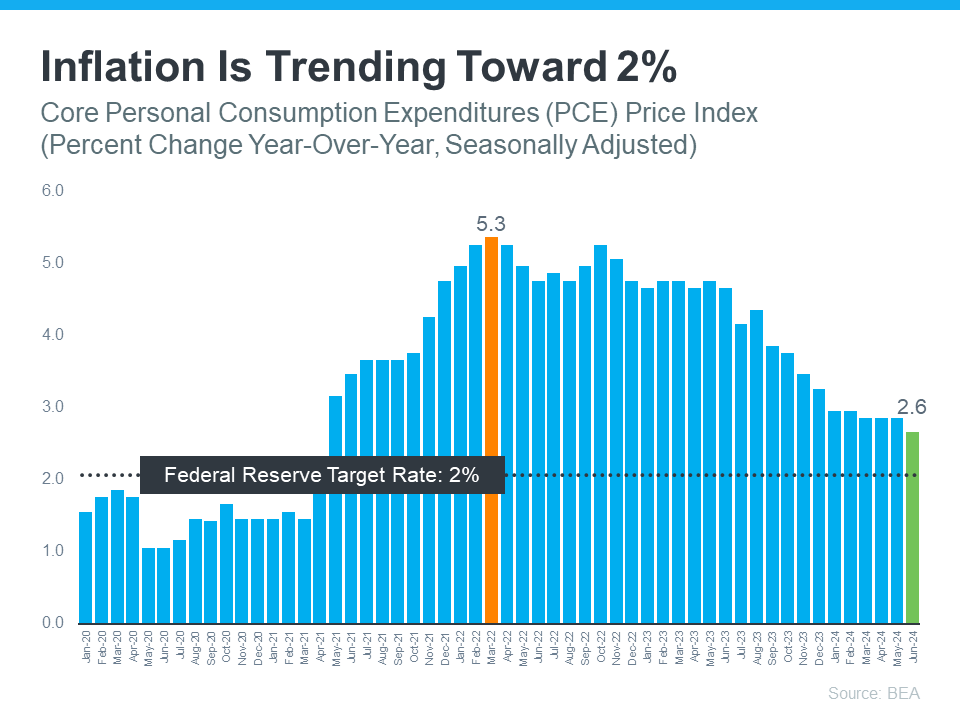How the Economy Impacts Mortgage Rates
How the Economy Impacts Mortgage Rates

If you're considering buying or selling a home, you're likely keeping a close eye on mortgage rates and wondering what's in store.
One key factor that can influence mortgage rates is the Federal Funds Rate, which affects the cost for banks to borrow from each other. Although the Federal Reserve (the Fed) doesn’t directly set mortgage rates, they do control the Federal Funds Rate.
This connection is why many are closely monitoring when the Fed might reduce the Federal Funds Rate. A reduction would typically lower mortgage rates. As the Fed meets next week, they'll be focusing on three crucial metrics to inform their decision:
- The Rate of Inflation
- How Many Jobs the Economy Is Adding
- The Unemployment Rate
Here’s the latest data on all three.
1. The Rate of Inflation
You've probably heard a lot about inflation recently – and you've likely felt its impact whenever you've made a purchase. High inflation means prices have been rising rapidly.
The Federal Reserve aims to bring inflation down to 2%. While it's still above that target, it's trending in the right direction (see graph below):
 2. How Many Jobs the Economy Is Adding
2. How Many Jobs the Economy Is Adding
The Fed is also monitoring the number of new jobs created each month. They aim for a consistent slowdown in job growth before making any changes to the Federal Funds Rate. A decrease in job creation indicates a strong yet cooling economy, which aligns with their objectives. According to Inman, this trend seems to be occurring now.
“. . . the Bureau of Labor Statistics reported that employers added fewer jobs in April and May than previously thought and that hiring by private companies was sluggish in June.”
So, while employers continue to add jobs, the pace has slowed compared to previous periods. This slowdown suggests that the economy is cooling down after a period of overheating, which is a positive sign for the Fed.
3. The Unemployment Rate
The unemployment rate measures the percentage of people who want to work but can't find jobs. A low rate indicates that many Americans are employed, which is beneficial for individuals. However, it can also contribute to higher inflation because more people working leads to increased spending, driving up prices. Currently, the unemployment rate is low, but it has been gradually increasing over the past few months (see graph below):

What Does This Mean Moving Forward?
While mortgage rates are expected to remain volatile in the near future, these indicators show the economy is moving in the direction the Fed aims for. Despite this progress, it’s unlikely they will lower the Federal Funds Rate at their meeting next week. Jerome Powell, Chair of the Federal Reserve, recently stated:
“We want to be more confident that inflation is moving sustainably down toward 2% before we start the process of reducing or loosening policy.”
In essence, we’re starting to see the initial signs the Fed is looking for, but they need more data and time to be confident this trend will continue. If this direction persists, the CME FedWatch Tool projects a 96.1% chance the Fed will lower the Federal Funds Rate at their September meeting.
Keep in mind, the Fed doesn’t directly set mortgage rates. However, when they cut the Federal Funds Rate, mortgage rates generally follow suit.
The timing of the Fed's actions could still change due to new economic reports, global events, and other factors. This is why trying to time the market isn’t typically advisable.
Bottom Line
Recent economic data may signal hope on the horizon for mortgage rates. Let's connect so you have an expert to keep you updated on the latest trends and what they mean for you.
Categories
Recent Posts










GET MORE INFORMATION

